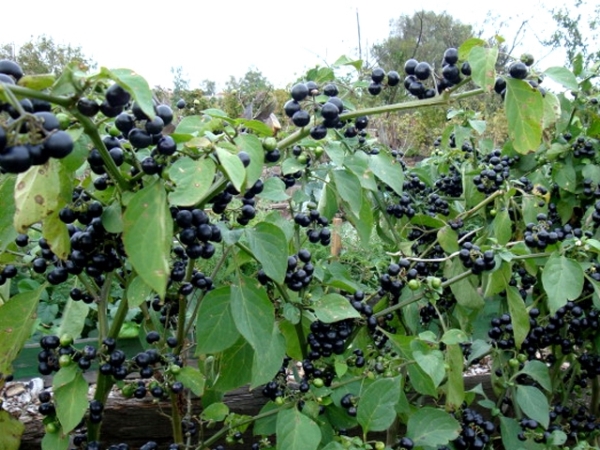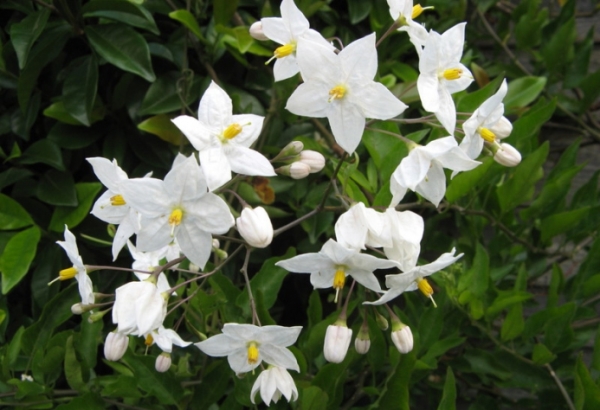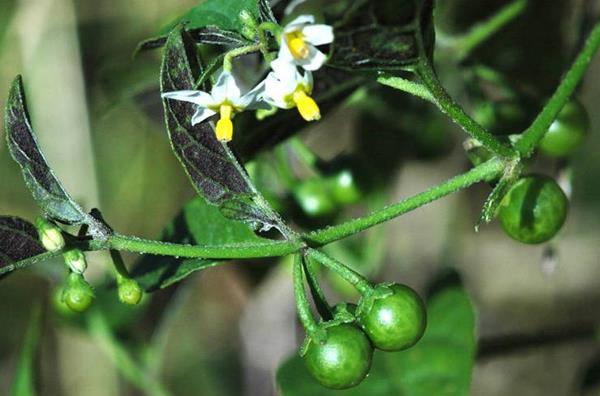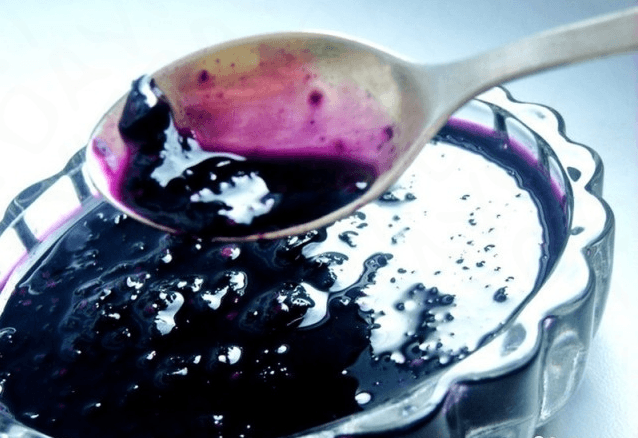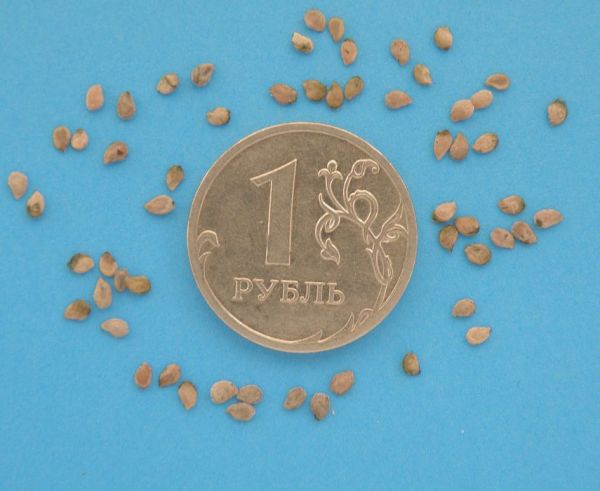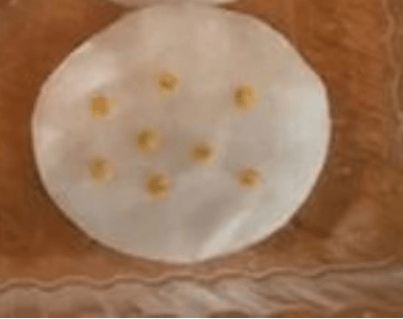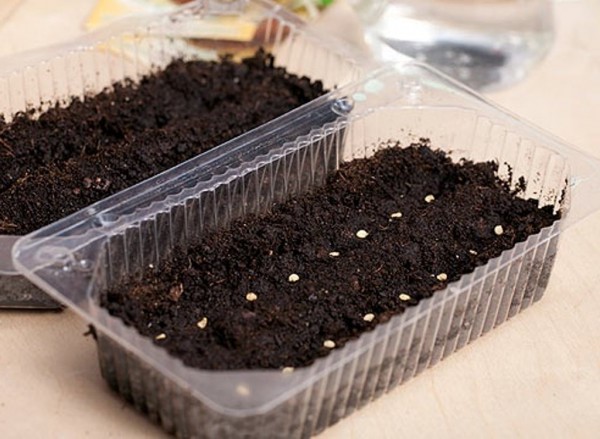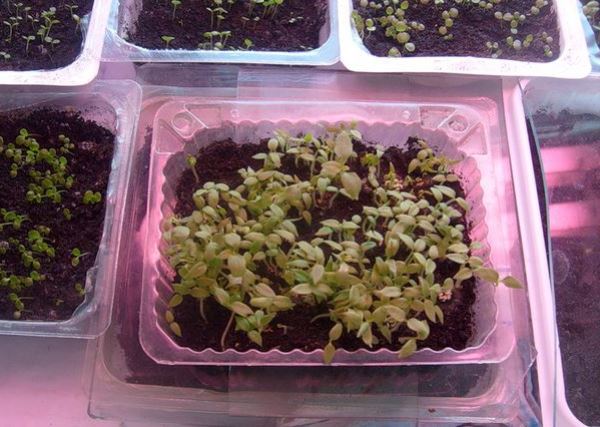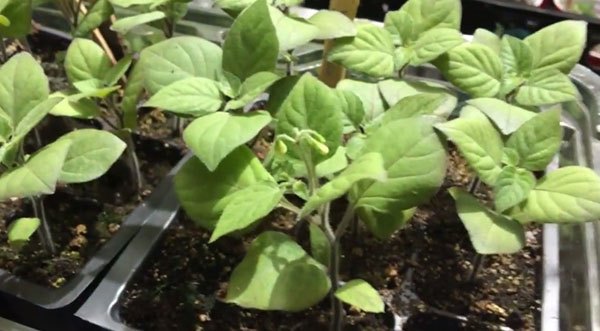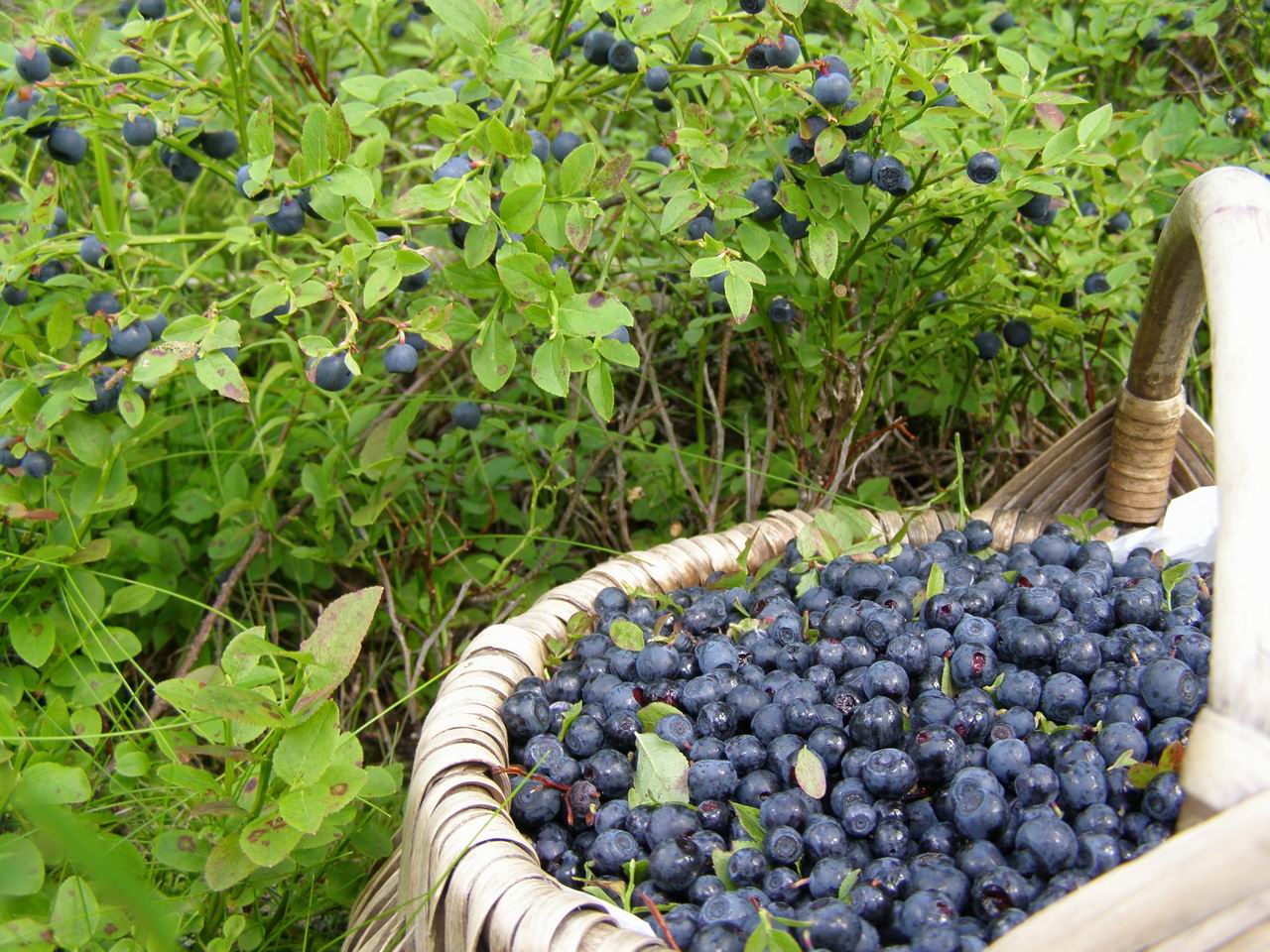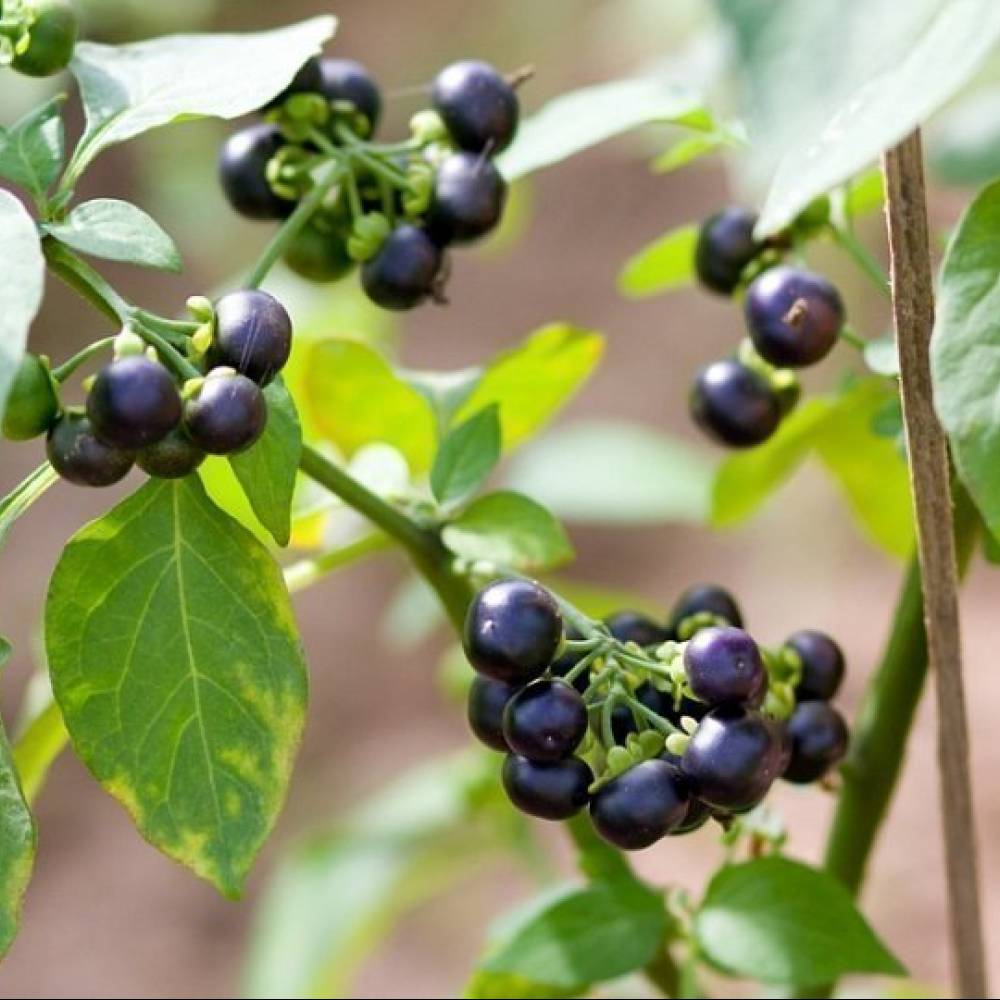Blueberry forte, Canadian blueberry, garden nightshade, raven - these are the unofficial names of the sunberry plant, which means sun berry. This plant has nothing to do with the well-known medicinal preparation, and it also has nothing to do with ordinary blueberries. In Europe, the culture is little known, but those who tried to grow it appreciated the medicinal and dietary properties of the plant.
Content
Description and characteristics of the plant blueberry forte
In 1905, American Luther Burbank crossed two tasteless and non-poisonous nightshades: African and European small-fruited creeping. The first parent provided the new plant with yield, decorativeness and large-fruitedness, and the second - edibility and taste. Sunberry is a herbaceous perennial, but is grown as an annual in temperate climates. This is due to the fact that forte blueberries yield the most abundant harvest in the first year of life.
Many representatives of the Solanov family grow in our gardens and vegetable gardens: potatoes, tomatoes, physalis, peppers, eggplants. Blueberry forte belongs to the same family, but does not resemble any of the named plants. When describing Sunberry, one should dwell on the following features:
- externally, the plant looks like a small tree or bush. On a thick herbaceous stem, many stepsons are formed during growth. As a result, it grows up to one and a half meters in height and has about a meter in diameter;
- forte blueberry leaves are slightly elongated, conical, have a matte shade;
- during flowering on the bush, many buds are formed, collected in inflorescences of 10-15 pieces. The flowers are small, whitish, outwardly resembling an asterisk;
- flowering continues until late autumn. In place of the flowers, juicy berries are formed the size of large currants (up to 2 cm in diameter). They ripen for a long time. An indicator of ripeness is the rich coal-black color of the fruit.
Blueberry forte has a high yield. From 1–2 planted plants, you can collect up to 5 liters of berries. Fruit flowering and ripening occurs continuously throughout the season.
Note! The berries of the plant do not crumble, do not deteriorate on the branch, they can only slightly wither. To extend the period of consumption of fresh berries, you can pull out the bush and hang it in a cool room.
Pros and cons of blueberry forte
The indisputable advantages of garden nightshade include the following:
- undemanding care;
- independence from the vagaries of the weather, but without watering in the hot summer it can give smaller fruits;
- high frost resistance;
- immunity to disease;
- high medicinal and dietary properties of berries and leaves.
Has culture and a number of disadvantages:
- all parts of the plant, except for ripe fruits, contain poisonous alkaloids, require careful use. The ripeness of the berries is determined by the color and springiness of the pulp when pressed;
- garden nightshade berry is tasteless, fresh, but very useful. It is grown primarily for medicinal purposes. A ripe berry makes a delicious jam, provided that ingredients with a bright taste are added - lemon, orange, apple;
- fresh berries are not recommended for children and pregnant women.
Video: sunny sunberry
I picked my only sunberry bush, 3 liters of berries came out, there is still a little left to ripen on the bush. Quite a harvest! .. those who wrote that this berry will help out in any lean year, when the others do not want to produce, are right, because it is always lull, regardless of the conditions. The next year I plant definitely and more, since now I have my own seeds.
If sweet berries have grown, this is a common, wild nightshade. Weed. It is edible when ripe. I eat it very much. Sunberry is tasteless and the jam is delicious. It is larger than wild nightshade: both the plant and the berries. And so - it looks like.
I plant a sunberry every year, this is the same nightshade, but large. I grow seedlings, big bushes grow. It's not tasty to eat it alive, but you can't distinguish pies and jam from cherry jam. I'm glad!
Features of growing blueberry forte
If you want to grow forte blueberries on your plot, then the seeds should be purchased only in specialized outlets or nurseries, since instead of a valuable crop from unscrupulous sellers, you can purchase seeds of ordinary wild nightshade. The plant is unpretentious in relation to the soil. The most excellent harvest is obtained on well-watered light soil. A site for cultivation is chosen well-lit, without drafts and preferably with a close occurrence of groundwater. It is not recommended to plant sunberry on soils with high acidity - the crop yield on them is significantly reduced.
Good precursors for blueberries forte are courgettes, cucumbers, pumpkin, legumes, and undesirable ones are tomatoes, peppers, cabbage. Garden nightshade can be planted in separate beds, or you can organize joint planting of a sunberry along with other vegetables.
Important! It is not recommended to plant blueberries forte next to cabbage and between plantings of related plants: tomatoes, potatoes, eggplants.
There are two ways to grow a crop: through seedlings or by sowing seeds in open ground. In a temperate climate, the second method is ineffective. Forte blueberries have a long growing season, so with direct sowing of seeds in the soil, the crop may not have enough time to ripen. Seedlings help to solve this problem, because some of the time it will grow indoors, and this gives it additional time for growth and strengthening.
Growing sunberry seedlings and planting them in open ground
Sowing seeds for seedlings is carried out in February-March. Before sowing seeds, it is recommended to carry out their presowing preparation:
- The nucleus of the garden nightshade seed is enclosed in a thick shell. It should be carefully cut or pierced with a needle, taking care not to damage the nucleolus itself.
- The seeds are placed in a container with calcined coarse river sand and shaken vigorously. This procedure helps to break the integrity of the shell, and seedlings will appear faster.
- After that, the seeds are soaked for 20 minutes in a weak solution of potassium permanganate for disinfection, and then dried.
Seeds prepared in this way can be immediately planted in a planting container, or they can be wetted before pecking. For this, the seeds are laid out between damp cotton pads or wrapped in a damp cloth and placed in a container. The sprouts will hatch in a few days and the seeds can be planted in the ground for seedlings.
When planting seeds for seedlings, you need to pay attention to the following points:
- A drainage layer should be organized in the planting container.
- Peat should not be added to the soil mixture, since the plant does not like acidic soil.
- Seeds are sown to a depth of no more than 0.5 cm; with a deeper planting, they may rot.
- The container with the planted seeds is placed under glass or foil at room temperature and sufficient lighting.
- Watering is carried out as needed with water at room temperature.
- Before seed germination, planting containers are daily ventilated.
- After the appearance of the third true leaf, the seedlings dive into separate cups.
Video: growing blueberries forte in seedlings
Planting sunberry in open ground
The best time to plant a Sunberry outdoors is late May or early June. By this time, the threat of night frosts has passed and a comfortable soil and air temperature for the plant will be established. Seedlings are considered ready for planting in the ground if they have 5–7 true leaves. It is recommended to apply organic fertilizers to the planting site (0.5 buckets per square meter). Landing is carried out in shallow wells well-spilled with water. After planting, the soil around the stem is compressed.
Helpful advice! To maintain moisture and control weeds, it is recommended to mulch the soil around the seedlings with humus or straw.
Important! Seedlings are planted at a distance of at least 70 cm from each other. Tighter planting will interfere with plant maintenance and harvesting.
Sunberry Care
Sunberry can be classified as an exotic plant, but at the same time it practically does not need care. Here are some of the features of standard procedures for growing a crop:
- watering is carried out only if there has been no rain for a long time, the soil is dry, or the weather is very hot. The culture does not like waterlogging of the soil. After watering, it is recommended to loosen, huddle the soil at the base of the bush;
- feeding is carried out in case of scarcity of soil. Loves sunberry fermented infusions of green mass and mullein, complex mineral fertilizers;
- in the case of abundant fruiting, the plant will need to be tied or installed with stakes under the most productive branches;
- there is no need to pinch the Sunberry. Only at the end of the growing season should the stepson shoots be removed so that the plant concentrates on ripening the berries;
- garden nightshade, like other cultivated plants, likes the soil around the bush to be weeded and loosened;
- Sunberry is a hardy species of nightshade, so it does not need to be treated against pests and bacterial diseases.
Note! Early ripe ripe berries can give quality seeds for subsequent plantings.
Video: how to grow blueberries forte
Helpful advice! If you do not have the opportunity to grow forte blueberries in the garden, then they can be planted in a large pot or box on the balcony or windowsill. The bush will turn out to be not so spreading and high, but it will bear fruit well.
Sunberry fruits are versatile in use: they can be dried, frozen, pickled, made jam and jams from them, juices, tinctures and wines can be prepared. In addition, flowering and fruiting bushes, completely covered with black shiny berries, can also become a decorative decoration of the site. Plant and enjoy!
